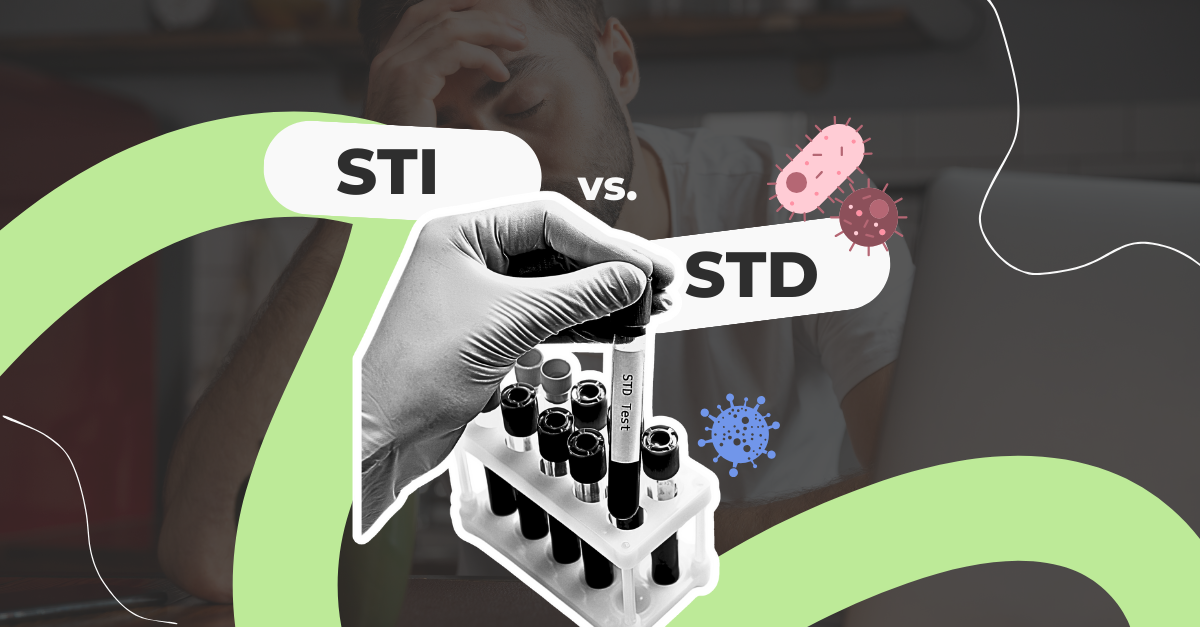Pseudofolliculitis Barbae (PFB), commonly known as razor bumps or ingrown hairs, is a skin condition that affects many individuals. It can be both uncomfortable and unsightly, causing irritation, redness, and even infections. However, with the right knowledge and self-care practices, PFB can be effectively managed and prevented. In this article, we will explore the causes and symptoms of PFB, the importance of self-care in managing the condition, essential self-care tips, medical treatments, and prevention strategies.
Understanding Pseudofolliculitis Barbae
What is Pseudofolliculitis Barbae?
Pseudofolliculitis Barbae is a common skin condition that occurs when hair regrowth becomes trapped and grows back into the skin instead of growing out of the follicle. This condition primarily affects individuals with curly or coarse hair, and is most commonly seen in men who shave their face. However, it can also occur in women who remove hair from their legs, underarms, or bikini area.
It's important to note that Pseudofolliculitis Barbae is not a sign of poor hygiene; rather, it is a result of hair removal practices and hair texture. The condition can be uncomfortable and unsightly, leading many individuals to seek treatment options to alleviate symptoms and prevent further complications.
Causes and Symptoms of Pseudofolliculitis Barbae
One of the primary causes of Pseudofolliculitis Barbae is improper shaving techniques. When hair is cut too closely to the skin or shaved against the grain, it can create sharp tips that easily penetrate the skin. Other contributing factors include curly or coarse hair, tight or friction-prone clothing, and certain skin types that are more prone to inflammation.
Individuals with Pseudofolliculitis Barbae may experience a range of symptoms beyond the typical red bumps and pimples. Some may also notice ingrown hairs, pus-filled lesions, or even cysts in severe cases. The discomfort associated with PFB can impact daily activities and self-esteem, prompting individuals to explore various treatment options to manage the condition effectively.
The symptoms of Pseudofolliculitis Barbae can vary from person to person. Common symptoms include small, red bumps or pimples around the shaved or waxed areas, itchiness, and skin tenderness. In some cases, PFB can lead to hyperpigmentation or scarring if left untreated.
The Importance of Self-Care in Managing Pseudofolliculitis Barbae
Role of Self-Care in Skin Health
Self-care plays a vital role in maintaining and improving skin health. By following proper self-care practices, individuals can reduce the occurrence and severity of Pseudofolliculitis Barbae. Self-care involves taking proactive steps to address the underlying causes of the condition, as well as adopting habits that promote overall skin health.
One key aspect of self-care for managing Pseudofolliculitis Barbae is choosing the right shaving techniques and products. Using a sharp, clean razor and shaving in the direction of hair growth can help prevent irritation and ingrown hairs. Additionally, incorporating exfoliation into your skincare routine can help unclog pores and reduce the risk of razor bumps.
Benefits of Self-Care for Pseudofolliculitis Barbae
By implementing effective self-care practices, individuals with Pseudofolliculitis Barbae can experience several benefits. Firstly, self-care can help reduce the frequency and severity of razor bumps and ingrown hairs. It can also alleviate itchiness and inflammation, promoting faster healing and preventing infections. Additionally, self-care practices can help improve the overall appearance and texture of the skin, enhancing self-confidence and well-being.
Furthermore, practicing self-care can lead to long-term improvements in skin health beyond just managing Pseudofolliculitis Barbae. By establishing a consistent skincare routine and incorporating healthy habits such as staying hydrated and protecting the skin from sun damage, individuals can maintain a healthy complexion and reduce the risk of other skin conditions.
Essential Self-Care Tips for Pseudofolliculitis Barbae
Proper Shaving Techniques
One of the fundamental aspects of self-care for Pseudofolliculitis Barbae is adopting proper shaving techniques. To minimize the risk of razor bumps and ingrown hairs, it is essential to follow these guidelines:
- Don't shave too closely to the skin. Leaving a little stubble can help prevent sharp hair regrowth.
- Always shave in the direction of hair growth. Shaving against the grain can increase the chances of hair regrowth penetrating the skin.
- Use a clean and sharp razor. Dull blades can cause more friction, leading to skin irritation.
- Don't pull the skin taut while shaving. This can make the hair more likely to grow back into the skin.
- Avoid repetitive strokes over the same area. This can lead to skin irritation and increase the risk of razor bumps.
It's important to note that while these techniques can help minimize the occurrence of Pseudofolliculitis Barbae, they may not completely eliminate the condition. If you continue to experience persistent symptoms, it's advisable to consult a dermatologist for further evaluation and treatment options.
Choosing the Right Skin Care Products
Using appropriate skin care products is another essential aspect of self-care for Pseudofolliculitis Barbae. Consider the following when selecting products:
- Use a gentle, non-comedogenic cleanser to clean the skin before shaving.
- Apply a moisturizer with soothing ingredients, such as aloe vera or tea tree oil, after shaving to hydrate and calm the skin.
- Avoid products with harsh chemicals or fragrances that can further irritate the skin.
- Consider using products specifically designed to prevent ingrown hairs, such as exfoliating cleansers or targeted serums.
Remember, everyone's skin is unique, so it may take some trial and error to find the right combination of products that work best for you. Patience and consistency are key when it comes to managing Pseudofolliculitis Barbae.
Lifestyle Changes to Improve Skin Health
In addition to proper shaving techniques and suitable skin care products, making certain lifestyle changes can contribute to better skin health, reducing the risk of Pseudofolliculitis Barbae. Consider these tips:
- Avoid wearing tight-fitting clothing that can create friction and trap sweat, leading to skin irritation.
- Cleanse and exfoliate the affected areas regularly to remove dead skin cells and prevent clogged pores.
- Avoid touching or picking at the affected areas to prevent further irritation or infection.
- Consider alternative hair removal methods, such as laser hair removal or depilatory creams, that may be less likely to cause razor bumps.
- Adopt a healthy diet and lifestyle, as proper nutrition and exercise can contribute to overall skin health.
While these lifestyle changes may not directly target Pseudofolliculitis Barbae, they can help improve the overall health and resilience of your skin, making it less susceptible to irritation and inflammation.
Remember, managing Pseudofolliculitis Barbae is a continuous process that requires a multifaceted approach. By implementing proper shaving techniques, using suitable skin care products, and making lifestyle changes, you can take proactive steps towards minimizing the impact of this condition on your skin.
Medical Treatments for Pseudofolliculitis Barbae
Pseudofolliculitis Barbae, commonly known as razor bumps, can be a frustrating condition to manage. While self-care practices are essential, sometimes additional interventions are needed to alleviate symptoms and promote healing. Over-the-counter solutions can complement self-care practices and provide relief. Consider incorporating the following options into your treatment regimen:
Over-the-Counter Solutions
In addition to regular self-care practices, over-the-counter solutions can play a crucial role in managing Pseudofolliculitis Barbae. Topical creams or gels containing ingredients like hydrocortisone or salicylic acid can help reduce inflammation and promote healing. These products work by soothing the skin and reducing redness and irritation. Antibacterial creams or ointments are also beneficial in preventing infections that can exacerbate the condition. Furthermore, exfoliating solutions containing glycolic acid or retinol can help remove dead skin cells, unclog pores, and prevent ingrown hairs from forming.
It's important to note that while over-the-counter solutions can be effective for mild cases of Pseudofolliculitis Barbae, more severe or persistent symptoms may require prescription treatments. If you find that self-care practices and over-the-counter remedies are not providing the desired results, it may be time to consult a dermatologist for further evaluation and treatment recommendations.
Prescription Treatments
When over-the-counter solutions fall short in managing Pseudofolliculitis Barbae, prescription treatments may be necessary to address the condition more effectively. A dermatologist can assess your individual needs and recommend appropriate treatment options tailored to your specific case. Prescription treatments for Pseudofolliculitis Barbae may include topical medications like corticosteroids or retinoids, which are particularly beneficial for addressing severe inflammation and stubborn ingrown hairs. In cases where infections are present or the condition is severe, oral antibiotics may be prescribed to combat the underlying bacterial issues.
For individuals seeking a more permanent solution to Pseudofolliculitis Barbae, dermatologists may recommend laser hair removal or electrolysis. These procedures target the hair follicles, reducing hair growth and minimizing the occurrence of ingrown hairs over time. By exploring prescription treatments under the guidance of a dermatologist, individuals with Pseudofolliculitis Barbae can effectively manage their condition and achieve long-lasting relief.
Preventing Pseudofolliculitis Barbae
Daily Habits for Prevention
Preventing Pseudofolliculitis Barbae requires consistent and proactive daily habits. Consider incorporating the following practices into your routine:
- Make sure to thoroughly cleanse the skin before and after shaving.
- Exfoliate the skin regularly to remove dead skin cells and prevent clogged pores.
- Avoid tight clothing that can cause friction and trap sweat.
- Moisturize the skin regularly to keep it hydrated and prevent dryness.
- Consider using alternative hair removal methods, such as electric shavers or depilatory creams.
Long-Term Prevention Strategies
For individuals prone to Pseudofolliculitis Barbae, adopting long-term prevention strategies is crucial in reducing the recurrence of the condition. These strategies include:
- Consider permanent hair removal methods like laser hair removal or electrolysis.
- Consult a dermatologist for personalized treatment plans and advice.
- Maintain a healthy lifestyle with a balanced diet and regular exercise.
- Follow proper self-care practices consistently, even when the condition is not actively present.
- Avoid excessive shaving or waxing, which can disrupt the hair follicles and lead to more ingrown hairs.
By implementing effective self-care practices, individuals with Pseudofolliculitis Barbae can effectively manage and prevent this common skin condition. Remember to consult a dermatologist for personalized advice and treatment options, especially if the condition is severe or persists despite self-care efforts. With patience, consistency, and proper self-care, you can achieve smoother, healthier skin free from the discomfort and irritation of razor bumps and ingrown hairs.
Navigate your sexual health with a click with HeHealth's cutting-edge AI-powered services.

Take control of your penis health by clicking the link below to access our user-friendly platform. By uploading an image, you can receive a confidential and doctor-validated result in less than 24 hours. Unlock your true potential and ensure your sexual health with HeHealth. Click here to try out HeHealth's AI-powered scan today!






